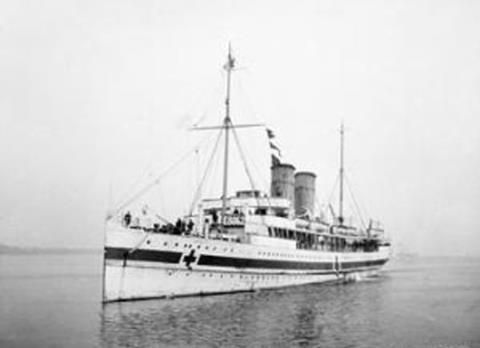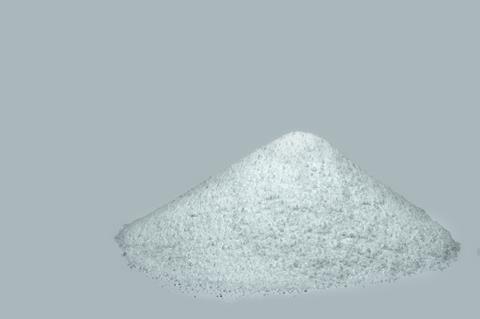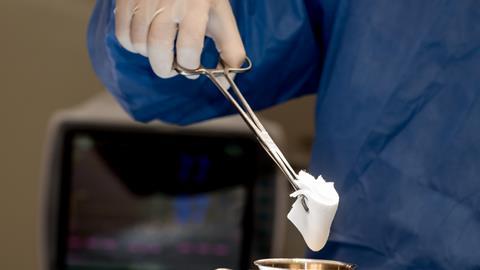Ben Valsler
This week, Mike Freemantle revisits battlefield surgery…
Michael Freemantle
During the first world war, a variety of antiseptic solutions were used to treat the wounds of injured soldiers. One of the most common was prepared by dissolving dry sodium carbonate and bleaching powder in tap water, filtering the solution to remove the calcium carbonate that precipitated, and finally adding boric acid, a mild antiseptic. The English organic chemist Henry Dakin described the preparation in the British Medical Journal in August 1915.

He wrote: ‘the resultant solution contains a balanced mixture of hypochlorite and polyborates of sodium with small amounts of free hypochlorous and boric acids.’
The sodium hypochlorite in the mixture is a powerful antiseptic. ‘The antiseptic action of boric acid has nothing to do with the employment of the acid,’ he noted. Its purpose was to act as a buffer to maintain the pH of the solution. The irritating action of any free caustic alkali formed in the preparation ‘would be at once neutralized by the boric acid or acid borates present in the solution.’
In September 1915, Dakin travelled to the Gallipoli peninsula on board a British hospital ship to test his solution for the treatment of infected wounds sustained by troops fighting in the Dardanelles campaign. Fleet surgeon Frederick Dalton subsequently pointed out in another paper in the British Medical Journal that no other antiseptic was used on the ship: ‘The usual surgical procedures were adopted for enlarging the wound, making counter openings, removing portions of detached bone, foreign bodies, including bits of clothing, fragments of shell, bullets, gravel, etc.’

The wound was then thoroughly irrigated with large quantities of Dakin’s solution. The results were ‘uniformly and consistently good,’ Dalton concluded.
In 1916, Dakin went to northern France to carry out research with French surgeon and biologist Alexis Carrel, who had won the 1912 Nobel prize in physiology or medicine for developing new surgical techniques. They worked together at a temporary hospital in Compiègne. Their treatment of infected wounds involved frequently flushing the surface of the wound with a stream of fresh Dakin’s solution.
Dakin, Dalton and Carrel would undoubtedly have been familiar with the work of English surgeon Joseph Lister in the 19th century. Lister, who is regarded as the father of antiseptic surgery, pioneered the use of phenol, then known as carbolic acid, to clean wounds, sterilise surgical instruments and scrub surgeons’ hands.
He was also an advocate of boracic – or boric – lint as a medical dressing for wounds and ulcers. A book on surgery, published in 1876, includes a chapter by Lister in which he extols the virtues of the lint. It is prepared, he notes, by dipping a piece of lint in a saturated solution of boric acid near boiling point and then allowing it to dry. He writes that it is ‘a fortunate circumstance that the crystals of boracic acid, instead of being hard and harsh, like most crystals, are soft and unctuous, and therefore occasion no mechanical irritation to the skin.’
Boric acid is a white waxy solid that occurs naturally as sassolite, a mineral found in Tuscany in Italy and Nevada in the United States. The acid is manufactured by the reaction of sulfuric or hydrochloric acid with a sodium borate mineral such as borax or kernite, or the calcium borate mineral colemanite.

Boric acid has a multiplicity of applications. It is used, for example, as an oxidation catalyst and in the manufacture of cosmetics, domestic insecticides, and fire retardants for textiles.
The acid is poisonous if ingested in large quantities. Brief exposure, however, is less dangerous, according to a fact sheet published by the National Pesticide Information Center in the United States. ‘Boric acid is low in toxicity if eaten or if it contacts skin,’ it notes.
Its use in antiseptic preparations such as Dakin’s solution has declined over recent decades for a variety of reasons. The National Health Service in Britain advises that antiseptics should not be used to clean wounds as they may damage the skin. Tap water or saline solution should be used instead.
I have just looked at the ingredients listed on a bottle of eye wash stored in my medicine cabinet. They include purified water, orange flower water, lavender water, witch hazel water and… boric acid! I then noticed the expiry date on the bottle: June 2008. I’ll have to dispose of it and buy another.
Ben Valsler
That was Mike Freemantle with boric acid. Next time, Katrina Krämer investigates the chemical inspiration behind one of Hitchcock’s greatest works.
Katrina Krämer
The Birds is based on a short story by English author Daphne du Maurier. But Hitchcock might have had another – very real – source of inspiration in the events that happened close to his home in Monterey Bay, California.
Ben Valsler
Find out more with Kat next time, if you can handle the suspense. Until then, email chemistryworld@rsc.org or tweet @chemistryworld with your ideas for compounds to cover. I’m Ben Valsler, thanks for listening and goodbye.













No comments yet